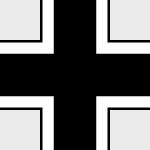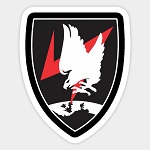Corgi AA36714 German Junkers Ju 88C-6 Medium-Bomber - R4+HH, Oberleutnant Gerhard Bohme, 1./Nachtjagdgeschwader 2, Catania, Sicily, 1942 (1:72 Scale)
"Guns before butter. Guns will make us powerful; butter will only make us fat."
- Reichsmarschall Hermann Goering, Head of the German Luftwaffe
 The Luftwaffe's Junkers Ju 88 was a twin-engine, multi-role aircraft. Among the most versatile planes of the war, it was used as a bomber, close-support aircraft, nightfighter, torpedo bomber and reconnaissance aircraft. A solid aircraft with great performance, it went on to be one of the Luftwaffe's most versatile aircraft. It carried out almost every kind of mission ever imagined, even as a giant flying bomb. It was used in every theater, with many nations, including nations allied against Germany.
The Luftwaffe's Junkers Ju 88 was a twin-engine, multi-role aircraft. Among the most versatile planes of the war, it was used as a bomber, close-support aircraft, nightfighter, torpedo bomber and reconnaissance aircraft. A solid aircraft with great performance, it went on to be one of the Luftwaffe's most versatile aircraft. It carried out almost every kind of mission ever imagined, even as a giant flying bomb. It was used in every theater, with many nations, including nations allied against Germany.
The aircraft's first flight was made by Prototype Ju 88V-1, which bore the civil registration D-AQEN, on December 21st, 1936. When it first flew, it managed about 580 km/h (360 mph) and Hermann Goring was ecstatic. Finally it was something that could positively fulfill the promise of the Schnellbomber, a bomber so fast fighters could not catch it.
Unfortunately, by the time everyone had had their wish list added (including dive-bombing), the speed had dropped to around 450 km/h (280 mph). The draggy fuselage was modeled after its predecessor, the Dornier Do 17, but with fewer defensive guns because the belief still held that it could out-run fighters. It was also very, very late. Planned for 1938, it finally entered service the day the Germans invaded Poland, and then with only 12 aircraft. Production was painfully slow, and problems with such an advanced machine kept cropping up. The Ju 88C series of heavy fighter was also created very early in 1940, but kept secret from Goring because he only wanted bombers.
The Ju 88A-1 series first flew anti-shipping sorties close to Norway. Ju 88 bombers based at Westerland on the island of Sylt in northern Germany carried out the first Luftwaffe raids against Britain. An attack on Rosyth on October 16th, 1939, succeeding in damaging three ships, but was then engaged in dogfights by Spitfires of 602 and 603 Squadrons of the RAF and two Ju 88s were shot down in the Firth of Forth. A raid on Scapa Flow the next day saw the loss of one Ju 88 to anti-aircraft fire. All combat-ready Ju 88s (some 133), were pressed into the Blitzkrieg, but very high combat losses and accidents forced a quick withdrawal from action to re-train crews to fly this very high performance beast. By this time it was seen that the A-1 had major performance problems, and an all-out effort was put into a major rework. The outcome was a longer wingspan that was deemed needed for all A-1s, thus the A-5 was born. Surviving A-1s were rewinged to A-5 specifications as quickly as possible.
Pictured here is a 1:72 scale replica of a German Junkers Ju 88C-6 medium-bomber that was piloted by Oberleutnant Gerhard Bohme, who was attached to 1./Nachtjagdgeschwader 2, then deployed to Catania, Sicily, during 1942. Now in stock!
Dimensions:
Wingspan: 11-inches
Length: 7-3/4-inches
Release Date: March 2024
 Historical Account: "Schnell Bomber" - Undoubtedly one of the most effective aircraft types operated by the Luftwaffe during the Second World War, the Junkers Ju 88 was developed as a speedy 'Schnell Bomber', but it was flexible enough to become arguably the most useful German aircraft of the entire war. In its C-6 variant configuration, the Junkers had been optimized for the heavy fighter role, easily making the transition to supporting the Luftwaffe's nightfighter force.
Historical Account: "Schnell Bomber" - Undoubtedly one of the most effective aircraft types operated by the Luftwaffe during the Second World War, the Junkers Ju 88 was developed as a speedy 'Schnell Bomber', but it was flexible enough to become arguably the most useful German aircraft of the entire war. In its C-6 variant configuration, the Junkers had been optimized for the heavy fighter role, easily making the transition to supporting the Luftwaffe's nightfighter force.
Initially, single-engined fighters were used to defend German territory at night, however, due to the limitations of the German night defense network, they had neither the range nor firepower to pose a serious threat to British night intruders. The Junkers Ju 88, however, was a very different proposition, with its size, speed and firepower making this the consummate nocturnal hunter and many a Bomber Command aircraft would fall prey to their guns.
The Luftwaffe airfield at Catania on Sicily was the principle airfield in the region and was used as the staging point for many Axis airborne operations across the Mediterranean and into North Africa. The airfield was also home to the nightfighting Junkers Ju 88 heavy fighters of I./NJG2, even though their fighters were regularly deployed across the entire Mediterranean Theatre.
This aircraft was recalled to Catania during the Summer of 1942, presumably to provide night defense support for the proposed Axis invasion of Malta, as increased Allied night air incursions were expected.


